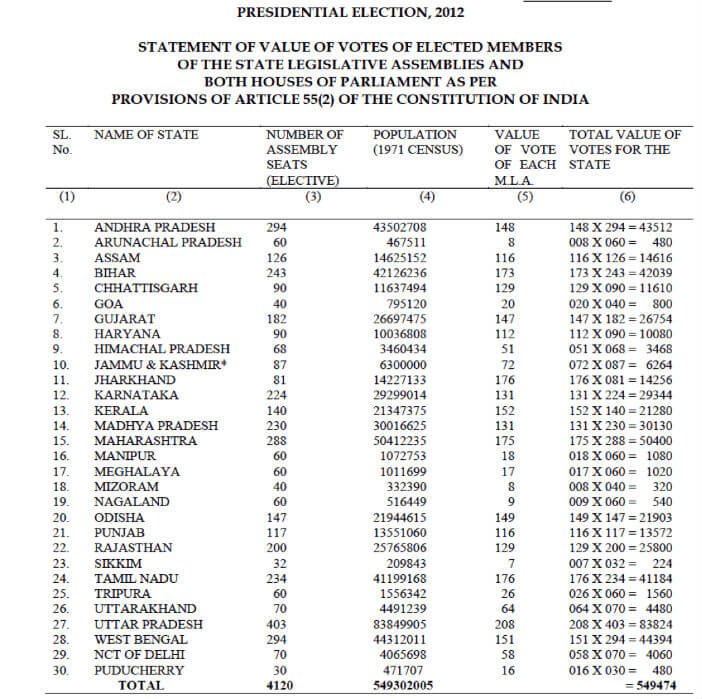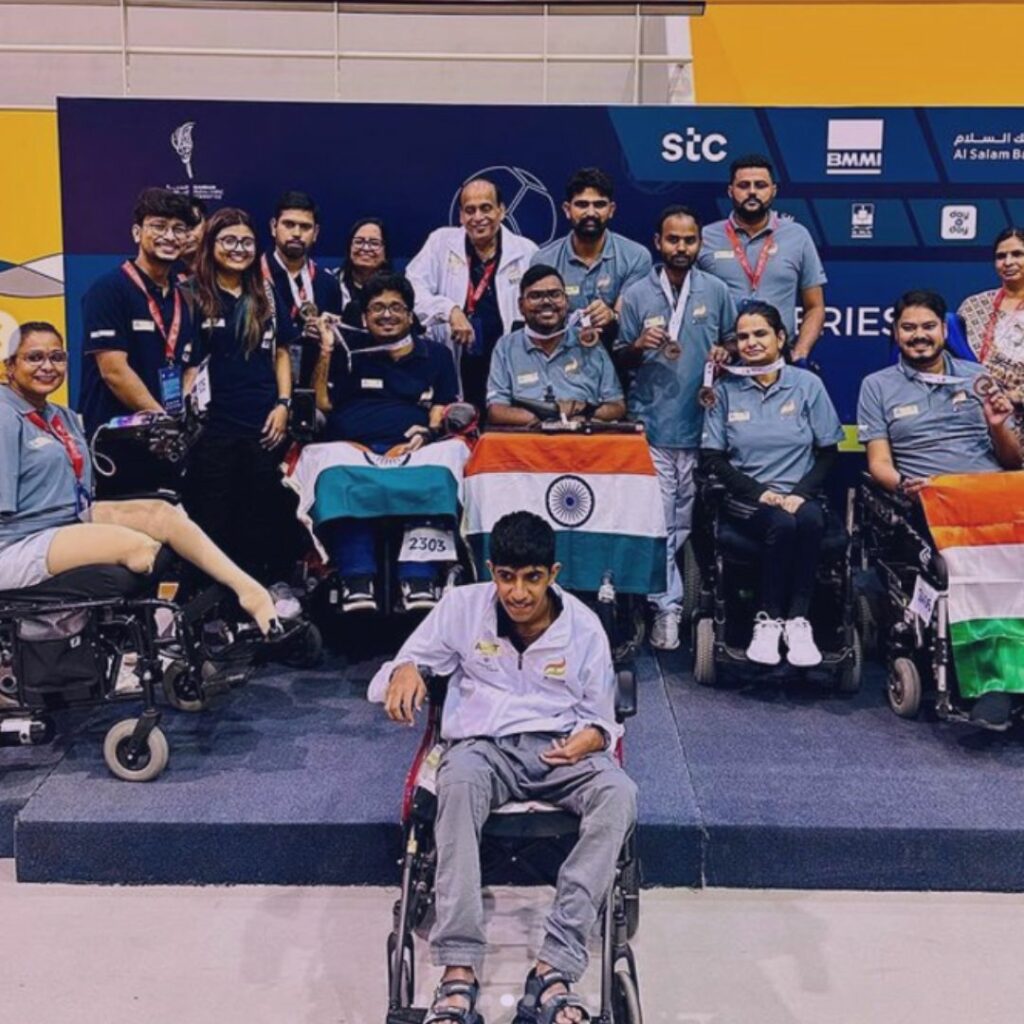Originally Published On Factly | Author: Rakesh Dubbudu | Image Source: Newslaundry
The President of India is not directly elected by people. He is elected directly by the representatives of people (i.e., Members of Parliament –MPs & Members of Legislative Assemblies – MLAs). All the MPs & MLAs form the Electoral College. In other words, the President is elected by an electoral college consisting of MPs & MLAs. The election process is a little complex and people find it difficult to understand the calculations behind the value of vote etc. Here is an attempt to simplify the entire process.
Eligibility to be the President of India
The following are the mandatory requirements for anyone to contest the election for the President of India.
- Must be a citizen of India
- Must have completed 35 years of age
- Must be eligible to be a member of the Lok Sabha.
- Must not hold any office of profit under the Government of India or the Government of any State or under any local government (Exceptions are the offices of President and Vice-President,Governor of any State and Ministers of Union or State)
Are there any other conditions to be fulfilled to contest?
Apart from the above conditions, the nomination paper of a candidate has to be signed by at least fifty eligible voters as proposers and at least fifty eligible voters as seconders. Here the voters are the MPs & MLAs and not citizens. A voter cannot propose or second more than one candidate.
What is the difference between a normal election & the Presidential election?
The one major difference between any normal general election and the Presidential election is the differential value of votes of various electors (voters). In any normal election, the value of the vote of every citizen is the same. His/her vote is counted as one vote. But in the Presidential election, the value of the MP vote is different from the value of a MLA vote. Not just that, the value of a MLA vote from one state differs from the value of the MLA vote of another state. The value of all the votes put together is the value of the voters for the election. Before each such election, the Election Commission notifies the total value of all the votes based on vacancies etc at that point in time.
How is the value of votes calculated?
The value of votes of electors is basically determined on the basis of population of the States. Since population figures are dynamic and keep changing every year, it has been decided through the 84th Constitutional Amendment, that until the population figures for the first census after 2026 are published (in other words, 2031 census), the population of the States for the purpose of this calculation will mean the population as per the 1971 census.
The Process for calculating the Value of MLA vote
The value of the vote of each member of the Electoral College (MLA), is calculated by dividing the population of the State as per 1971 Census, by the total number of elected members of the respective state assembly, and then to divide the quotient by 1000. Total Value of all members of each State Assembly is worked out by multiplying the number of seats in the Assembly by the number of votes for each member. Let us look at Bihar as an example.
Similar process is followed for all the states. For the 2012 Presidential election, the total value of the MLA votes was 5,49,474. The value of a MLA vote in individual states is in the table below.
The Process for calculating the Value of MP vote
The total value of votes of all the States is divided by the total number of elected members of Parliament (Lok Sabha 543+Rajya Sabha 233) to get the value of votes of each Member of Parliament or the MP. For 2012, this worked out to be 708. The value of a MP vote is substantially higher than the value of a MLA vote.
Both the values (MP & MLA) are added to the total value of the votes for any Presidential Election. In 2012, this value was 10,98,882 (549408 for MP & 549474 for MLA). The total number of eligible voters in the 2012 election were 4896 (776 MPs & 4120 MLAs from states).
The Election Process
The election happens through a ballot paper, green ballot paper for MPs & Pink ballot paper for MLAs. This election happens through the proportional representation process. Hence each voter can mark as many preferences, as the number of candidates contesting the election. These preferences for the candidates are to be marked by the voter, by marking the figures 1,2,3, 4, 5 and so on, against the names of the candidates, in the order of preference.
Counting Process
The winning candidate has to secure the required quota of votes to be declared elected, i.e., 50% of valid votes polled +1. After the valid ballot papers are segregated from the invalid ones, the valid ballot papers are distributed among the contesting candidates on the basis of first preference marked on each of them for those candidates. The value of votes which each contesting candidate gets in this process is ascertained by multiplying the number of ballot papers on which the first preference is marked for him, by the value of vote which each ballot paper of a member (MP or MLA) represents. The total votes secured by each contesting candidate are then ascertained by adding together the value of votes secured by him from the MPs and the MLAs. This is the first round of counting.
For ascertaining whether there is a winner after the first round of counting, the value of votes credited to each contesting candidate in the first round of counting is added up to determine the total value of valid votes polled at the election. This total value is divided by two and one is added to the quotient to determine the required quota for victory. If any of the candidates receives this number of votes in the first round, he is declared a winner.
If however, after the first round of counting, no candidate secures the required quota of votes, then the counting proceeds on the basis of a process of elimination and exclusion, whereby the candidate credited with the lowest number of votes in the first round is excluded and all his ballot papers are distributed among the remaining candidates on the basis of the second preferences marked thereon. The value of such transferred ballot papers will be the same as the value at which the excluded candidate received them. The ballot papers on which second preference is not marked is treated as exhausted ballot papers and shall not be further counted, even if the third or subsequent preferences are marked. This process is continued until there is a clear winner with 50% +1.
What about the Anti – Defection Law & Whips?
The provisions of the anti-defection law are not applicable to the Presidential election. Hence the voters can vote according to their conscience and are not bound by any party whips. The voting is also by secret ballot. In 2007, Prathiba Patil won two-thirds of the total vote though the value of the votes of parties supporting her did not add up to two thirds. Also, Nominated members cannot vote in the Presidential election.
Source: Election Commission of India










